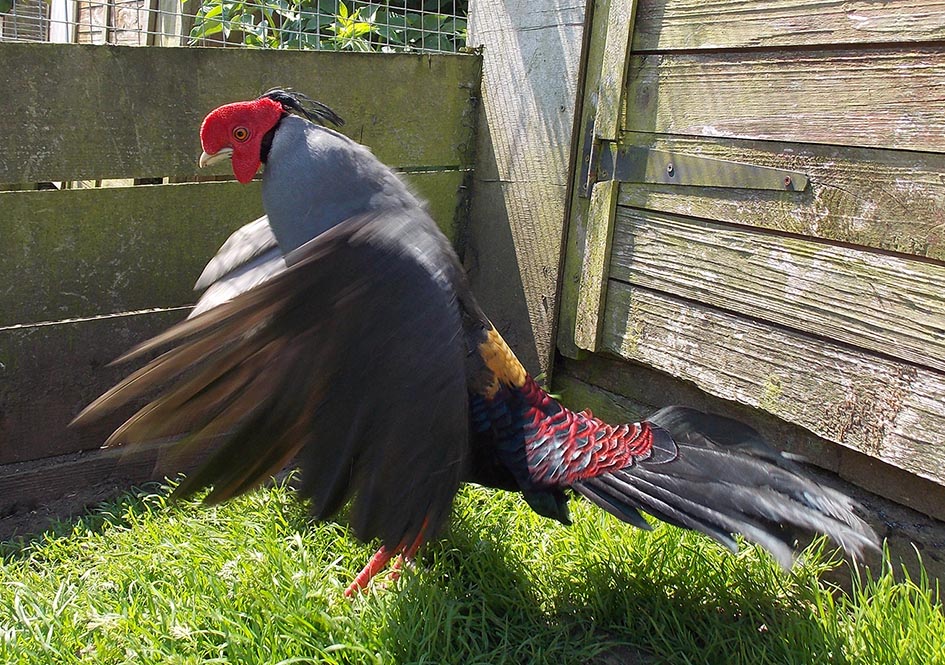

The Siamese Fireback cock pheasant is an impressive bird with bright red wattles and legs, a beautifully curved tail and crest and delicately marked, grey feathered, body. He also has the golden yellow back that gave him his name with added shades of dark red and blue that shimmer in the sunlight. The hen is a well marked bird with strong barring on her wings and tail, red facial skin and long red legs.
Siamese Fireback Pheasants inhabit dense forests in Southern China where they eat many invertebrates, fruits and berries. In captivity they still enjoy an omnivorous diet particularly relishing their mealworms. I have also found them to eat much more greenery than either the Vieillot's or Bornean Crested Firebacks.
As with other Fireback pheasants, the Siamese do benefit from heated shelters. The heaters are rarely necessary but if we have a severe winter they are likely suffer so it is best to have a source of electric so a heater of some kind can be made available to them. A thick perch should also be available, so the birds can sit completely covering their feet to keep them snug and free of frostbite. Birds in their first year are far more delicate than mature Siamese Firebacks and will not manage well without added heat to see them through to spring.
As youngsters these firebacks can be a bit more nervous and flighty than some of our other species but this does change as they get older especially if some time can be spent with them. In fact once mature, the cocks will rarely shy away from any visitors to the aviary, preferring instead to show off, either by displaying or vocally, letting everyone know exactly who the pen belongs to. They are bonny birds always wing whirring and and puffing themselves up. Unfortunately the cocks can be hard on their mates. We have some that are always fine but others can be relentless so plenty of places for the hens to escape to are a necessity with this species.
The Fireback hens take longer than most to reach breeding age. Many will not lay until their third year. The cocks are however normally fertile in their second year. When they do start laying the hens can produce a fair amount of eggs in a season. Usually there are about 6 or 7 eggs in a clutch and a few clutches may be laid. These birds are not early starters and are unlikely to lay until, at least, late April but possibly not until May. They do continue once many other species have finished for the year however and will often still be producing eggs in August. Although the chicks are not as hardy as most pheasant species they've not proven too problematic to rear, they just need a bit extra heat.
These are beautiful birds to watch and well worth a bit extra time and cost to care for them properly. I love the brassiness of the cock bird. He may harrass his mate at times but he will wait forever for her to collect a peanut or mealworm he has found especially for her, repeatedly calling until she eventually comes to investigate, no matter how long it takes. Unfortunately the Crested Firebacks didn't like our climate very much, and suffered too many problems for it to be fair to continue keeping them, but we are extremely pleased we can still enjoy their somewhat tougher and gorgeous relative - The Siamese Fireback.